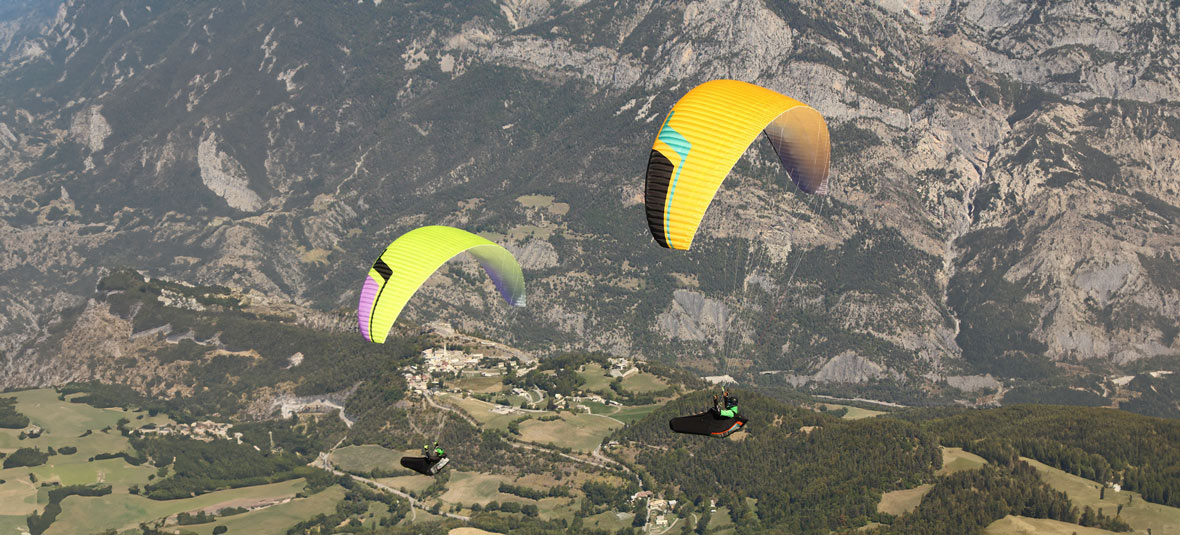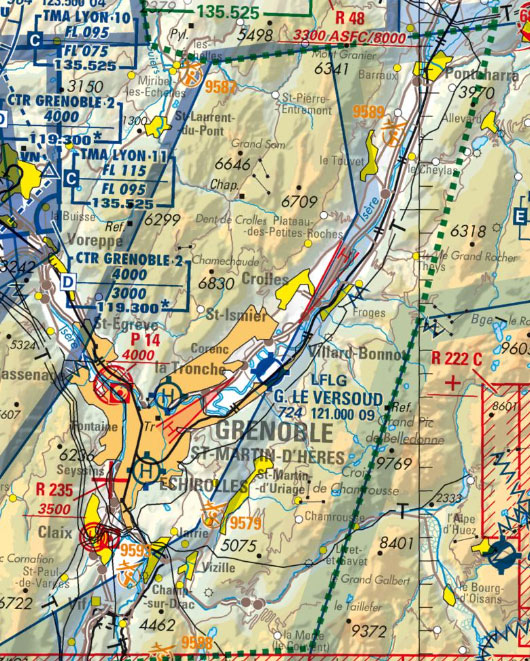AIRSPACE FOR PARAGLIDING: HOW DOES IT WORK ?


Paragliding is an activity that offers unparalleled sensations of freedom, allowing you to soar through the sky and soar above the landscape. However, this feeling of freedom can only be fully appreciated if the pilot knows and respects the rules governing the airspace. These rules ensure the safety of all airspace users, whether other paragliders, airplane pilots or other aircraft.
UNDERSTAND THE DIFFERENT AREAS AND ZONES :
Basic air zones
WHICH AIRSPACES ARE AUTHORIZED FOR PARAGLIDING ?
- Class A : IFR flights only. Air traffic control and separation provided for all flights.
- Class B : IFR and VFR flights authorized. Air traffic control and separation provided for all flights.
- Class C : IFR and VFR flights authorized. Control for all. IFR-IFR, IFR-VFR separation assured, traffic information for VFR.
- Class D : IFR and VFR flights authorized. Control for all. IFR-IFR separation assured; traffic information provided for IFR on VFR and for VFR on all other flights.
- Class E : IFR and VFR flights authorized. IFR control. IFR-IFR separation assured; traffic information provided where possible.
- Class F : IFR and VFR flights authorized. IFR traffic service and flight information service on request for all.
- Class G : IFR and VFR flights authorized. Flight information service on request for all.
Category A airspace is exclusively dedicated to IFR flights.
Category B, C and D airspaces accept IFR and VFR flights, but must be cleared by air traffic control, and equipped with a radio and transponder.
PULs can only operate in category E, F or G zones. These are in fact the only three categories where "unregulated VFR" is permitted.
Zone E : it's crucial to note that in this category of zone, VFR flight can mix with IFR flight.
Zone F : There are no zones of this type in France.
Zone G : Known as "Unregulated" airspace, it encompasses all areas not classified elsewhere. It is not shown directly on aeronautical charts, and is therefore identified "by elimination".
UNDERSTAND THE DIFFERENT AREAS AND ZONES :
Basic air zones
- Class A : IFR flights only. Air traffic control and separation provided for all flights.
- Class B : IFR and VFR flights authorized. Air traffic control and separation provided for all flights.
- Class C : IFR and VFR flights authorized. Control for all. IFR-IFR, IFR-VFR separation assured, traffic information for VFR.
- Class D : IFR and VFR flights authorized. Control for all. IFR-IFR separation assured; traffic information provided for IFR on VFR and for VFR on all other flights.
- Class E : IFR and VFR flights authorized. IFR control. IFR-IFR separation assured; traffic information provided where possible.
- Class F : IFR and VFR flights authorized. IFR traffic service and flight information service on request for all.
- Class G : IFR and VFR flights authorized. Flight information service on request for all.
Airspace with special status :
Uncontrolled airspace (EANC)
Uncontrolled airspace is the area where aircraft can fly without having to request authorization from an air traffic control organization. For paragliders, this is often the area in which they operate. But that doesn't mean you can fly just any old way. Respect for other users, vigilance and knowledge of weather conditions are essential to guarantee safety. Paragliding is therefore permitted in zones classified as.
Controlled airspace (EAC)
In contrast to EANC, controlled airspace is an area where all flights require prior authorization from the relevant authorities. Paraglider pilots must therefore be particularly vigilant and avoid entering these zones without authorization. EACs are generally set up around major airports or on busy air routes.
Restricted Areas (RAs)
Restricted areas are airspaces where specific rules apply. They may be permanent or temporary. For example, during a particular event, an RZ may be set up to protect the skies above the area concerned. Paragliders should consult the information on these zones regularly to make sure they don't enter them by mistake.
Temporary blackout zones (ZIT)
Similar to no-fly zones, these are temporary. They can be set up for a variety of reasons, such as the protection of important people, major events or natural disasters. Paraglider pilots should therefore be aware of and avoid these zones while they are in place.
Danger zones (DZ)
Danger zones are airspaces where flying is possible, but where activities potentially dangerous to aircraft may take place. For example, military exercises or gear testing. Paragliders are advised to avoid these areas, or to find out exactly how dangerous they are, before flying in them.
HOW TO READ AN AERONAUTICAL CHART ?
One of the essential skills for any paraglider operating in the vicinity of specific air zones is the ability to read and understand an aeronautical chart. It provides all the information you need on the various airspaces.
Symbols and legends : every aeronautical chart has a legend detailing the symbols used. It's the first thing you need to consult to understand the map.
Airspace outlines : On the map, each type of airspace (EANC, EAC, ZR, etc.) is represented by a specific outline, often accompanied by a distinctive color or hatch.
Altitudes : Aeronautical charts also indicate the minimum and maximum altitudes of the various airspaces. It's crucial to take these into account when planning a paragliding flight.
Landmarks : In addition to airspaces, the map also gives landmarks on the ground, such as towns, rivers or mountains, enabling pilots to locate themselves more easily.
Updates : Airspaces are subject to change. It is therefore essential to ensure that you have an up-to-date aeronautical chart, and to regularly consult NOTAMs (Notices to Airmen), which indicate temporary changes.
In conclusion, respecting airspace is crucial to guaranteeing the safety of all sky users. All paraglider pilots need to be informed and vigilant, both in flight and when planning their itinerary. A good knowledge of the rules and tools, such as the aeronautical chart, is therefore essential for flying in complete serenity.

DISCOVER ALL THE PARAGLIDING FAQ :
Paragliding FAQ: Frequently Asked Questions about Paragliding
Paraglider wing folding step by step
Storage of paragliding equipment: how to maintain your equipment ?
Paraglider revision : when and how to have your equipment checked ?
Paragliding weather: what are the best conditions for paragliding ?
How to choose a paragliding school ?
Where to buy paragliding equipment ?
What are the requirements for registering a paramotor wing in France ?







